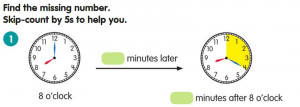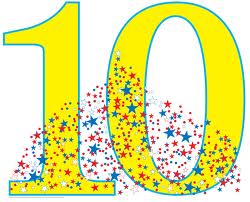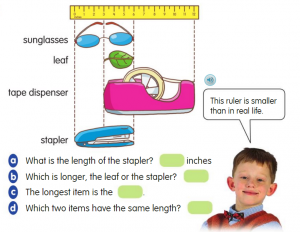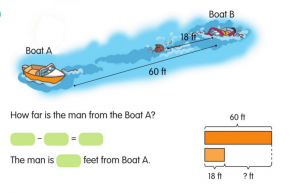Posted by kavery508 | Posted in Uncategorized | Posted on April 29, 2019
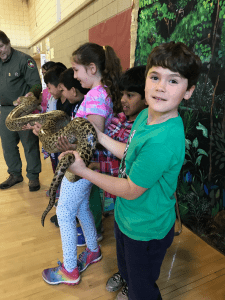 What’s in a rainforest? Students found out this week when the Rainforest Reptiles show came to our school! This engaging presentation involved up close viewings of live animals with demonstrations, and provided a perfect kick off to our environmental studies. Thank you to our PTO for providing this exciting enrichment opportunity!
What’s in a rainforest? Students found out this week when the Rainforest Reptiles show came to our school! This engaging presentation involved up close viewings of live animals with demonstrations, and provided a perfect kick off to our environmental studies. Thank you to our PTO for providing this exciting enrichment opportunity!
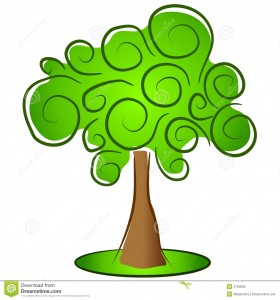 As a reminder, we’re planning on re-using plastics to create games to share for Floral Goes Green. Please send in: Clean plastic bottles, any size; plastic bags; old/broken tubs, lids, mats, trays, plastic balls; pvc piping/caps; etc. We’re happy to take extras for any students without.
As a reminder, we’re planning on re-using plastics to create games to share for Floral Goes Green. Please send in: Clean plastic bottles, any size; plastic bags; old/broken tubs, lids, mats, trays, plastic balls; pvc piping/caps; etc. We’re happy to take extras for any students without.
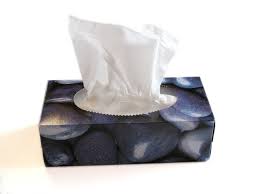 Spring cold and allergy season has begun! Help us fight the good fight, and send in a few boxes of kleenex when you can to get us to the end of the year. Thank you!
Spring cold and allergy season has begun! Help us fight the good fight, and send in a few boxes of kleenex when you can to get us to the end of the year. Thank you!
 This week, students will learn to comprehend nonfiction text by paying close attention to titles, subtitles, and headings when reading informative articles. These nonfiction text features are used by author’s to guide our thinking, and they lead us to understand the most important things worth remembering. You can try it out at home with articles from NationalGeographicKids.com, such as this one on Denali National Park. Notice how the headings cleverly point us in the direction of what’s important.
This week, students will learn to comprehend nonfiction text by paying close attention to titles, subtitles, and headings when reading informative articles. These nonfiction text features are used by author’s to guide our thinking, and they lead us to understand the most important things worth remembering. You can try it out at home with articles from NationalGeographicKids.com, such as this one on Denali National Park. Notice how the headings cleverly point us in the direction of what’s important.
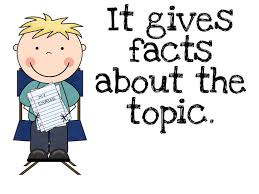 Our final writing focus in on the Informative Genre. Students will engage in readings centered around the environment such as the rainforest and recycling. They’ll use their knowledge to become the experts who share that information with others in pieces that use an introduction, facts and details, and a conclusion. Smart!
Our final writing focus in on the Informative Genre. Students will engage in readings centered around the environment such as the rainforest and recycling. They’ll use their knowledge to become the experts who share that information with others in pieces that use an introduction, facts and details, and a conclusion. Smart!
 Our next area of study in math is graphing. As outlined in the Common Core, students should understand how to collect and organize data. They should be able to analyze, interpret, and create a variety of graphs including picture graphs, line plots, and bar graphs. As usual, MIF challenges students to go beyond the literal. New for kids is the concept of “key” in graphing. Take a look at this picture from the student book.
Our next area of study in math is graphing. As outlined in the Common Core, students should understand how to collect and organize data. They should be able to analyze, interpret, and create a variety of graphs including picture graphs, line plots, and bar graphs. As usual, MIF challenges students to go beyond the literal. New for kids is the concept of “key” in graphing. Take a look at this picture from the student book.
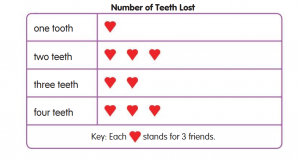
Notice how the key provides necessary understanding to interpret the graph correctly. Please check your child’s homework to be sure they are reading the key when answering questions. You can find lots of great information with very helpful picture support at the Think Central site! (Link to it via the Parent Resources section of this blog.) This unit is Chapter 17, found in eBook B of the student book.

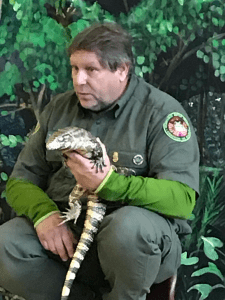
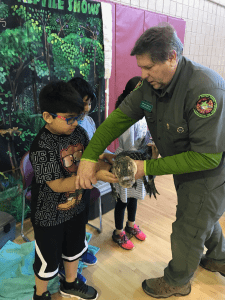

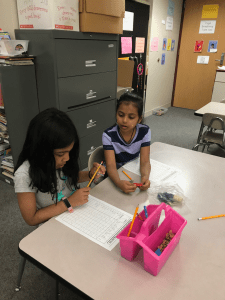

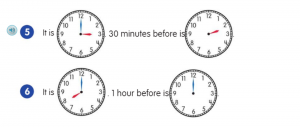
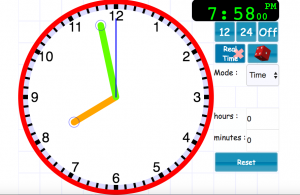
 In science, students will be introduced to the properties of solid objects. They will learn what makes a solid (molecules packed in regular arrangements; hold their shape) and scientific vocabulary of classification (rigid; flexible; pointed; opaque; translucent; etc.). They will apply these ideas as they explore and sort a variety of solid objects, then design and create sun hats with the insulating property of solids in mind!
In science, students will be introduced to the properties of solid objects. They will learn what makes a solid (molecules packed in regular arrangements; hold their shape) and scientific vocabulary of classification (rigid; flexible; pointed; opaque; translucent; etc.). They will apply these ideas as they explore and sort a variety of solid objects, then design and create sun hats with the insulating property of solids in mind!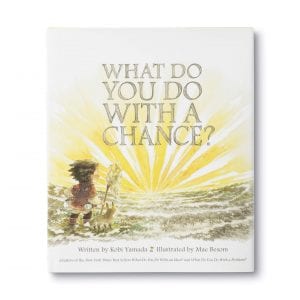
 The kids have done a great job with writing poetry! The goal is to help kids think like a poets, with careful word choice, metaphor, and imagery. Here are some snippets from: 1) Ellie, 2) William, 3) Ekansh, 4) Kian, and 5) Luana: 1) Tiger//Stalks through the grass//Striped body quiet and controlled//as if a monster. 2) In winter it snows//with the frosty wind that blows,//And when you go out it’s like a wolf is biting you. 3) Dodgeball//As I look for the ball//something catches the glimpse of my eye//something blue//as if it were hunting for prey. 4) The hot sun blazes down to the ground.//The grass turns as brown as wood. The trees bloom as green as a bush. 5) Where I go my dog follows//I can’t pass be her//and when I go to school//I have to dash outside. –Awesome stuff!
The kids have done a great job with writing poetry! The goal is to help kids think like a poets, with careful word choice, metaphor, and imagery. Here are some snippets from: 1) Ellie, 2) William, 3) Ekansh, 4) Kian, and 5) Luana: 1) Tiger//Stalks through the grass//Striped body quiet and controlled//as if a monster. 2) In winter it snows//with the frosty wind that blows,//And when you go out it’s like a wolf is biting you. 3) Dodgeball//As I look for the ball//something catches the glimpse of my eye//something blue//as if it were hunting for prey. 4) The hot sun blazes down to the ground.//The grass turns as brown as wood. The trees bloom as green as a bush. 5) Where I go my dog follows//I can’t pass be her//and when I go to school//I have to dash outside. –Awesome stuff!